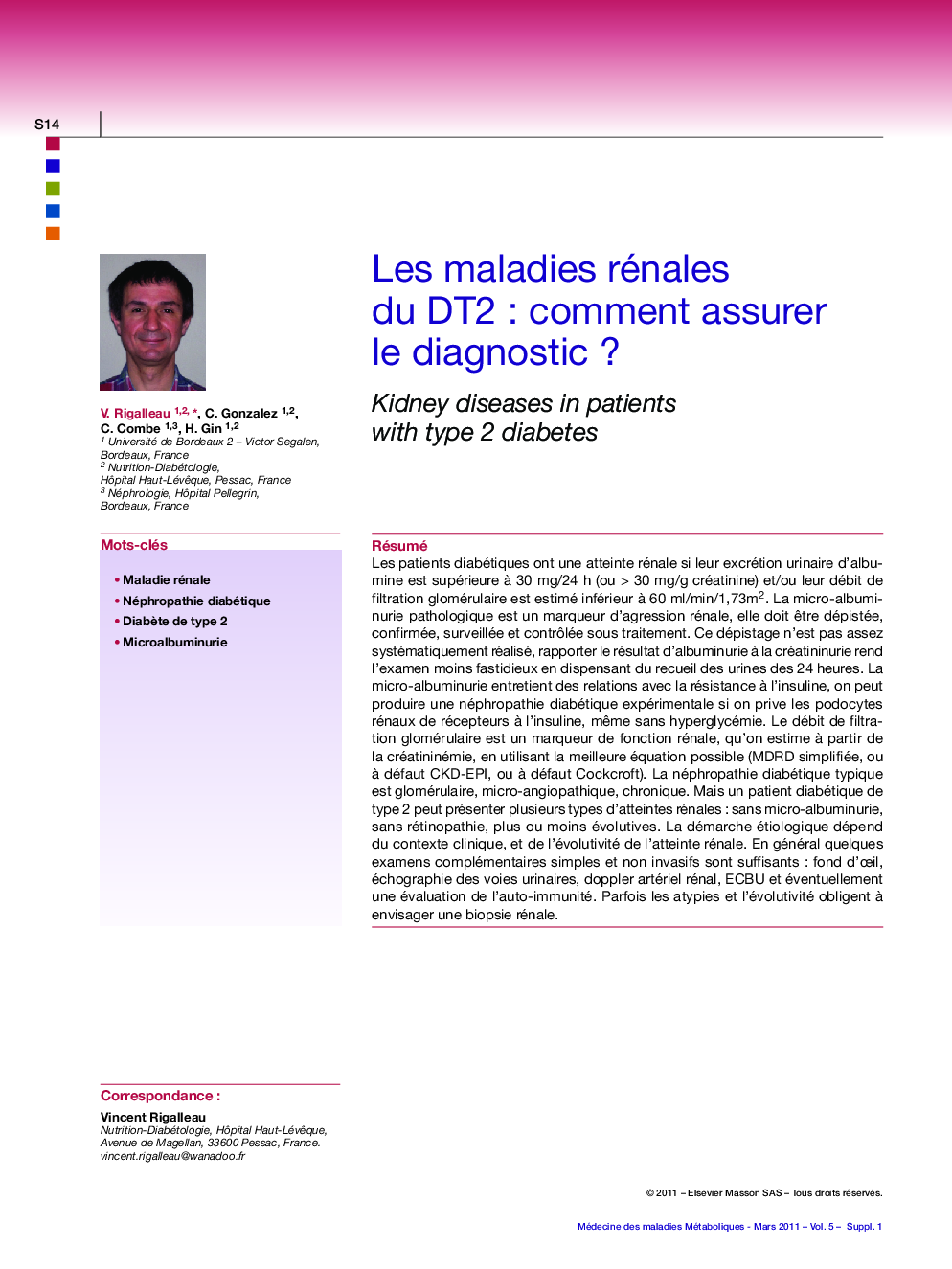| Article ID | Journal | Published Year | Pages | File Type |
|---|---|---|---|---|
| 3274928 | Médecine des Maladies Métaboliques | 2011 | 5 Pages |
Abstract
The patients with diabetes do have a Chronic Kidney Disease if their Albumin Excretion Rate is higher than 30Â mg/24Â h (or > 30Â mg/g creatinine) and/or their Glomerular Filtration Rate is estimated lower than 60Â ml/min/1,73Â m2. An abnormal Albumin Excretion is the mark of a kidney damage, it must be screened, confirmed, follown-up and controlled by the treatment. The screening is not enough systematically perrformed, relating the AER to the creatinine excretion rate makes it less cumbersome for the patients as it does not require a 24Â h urine collection. Micro-albuminuria relates to insulin resistance, an experimental diabetic nephropathy was recently found in animals invalidated for the insulin receptor in the podocytes, even without hyperglycaemia. The Glomerular Filtration Rate marks renal function, it is estimated from serum creatinine, with the best formula as possible : the abbreviated MDRD, or the CKD-EPI, or the Cockcroft & Gault. The typical diabetic nephropathy is a glomerular, micro-angiopathic, chronic disease. But various kidney diseases can occur in the patients with T2D : without micro-albuminuria, without retinopathy, more or less progressive. The search for the etiology in each patient depends on the clinical context and how the disease progresses. A few simple exams are usually sufficient : ophtalmoscopy, ultrasounds, urine culture, sometimes autoantibodies. In a few cases, atypies and progression lead to perform a renal biopsy.
Keywords
Related Topics
Health Sciences
Medicine and Dentistry
Endocrinology, Diabetes and Metabolism
Authors
V. Rigalleau, C. Gonzalez, C. Combe, H. Gin,
